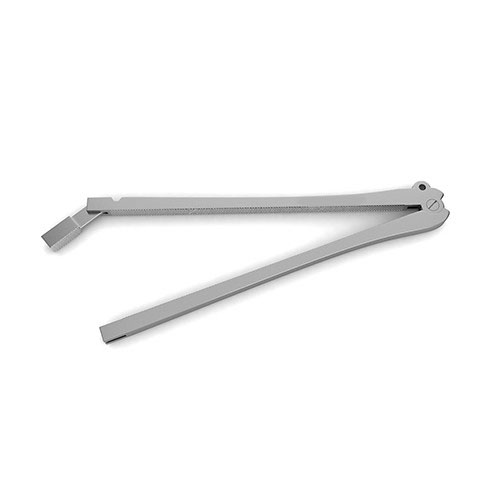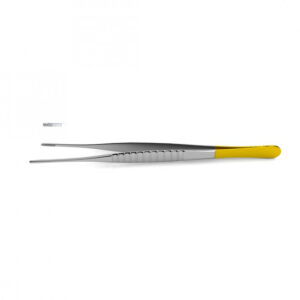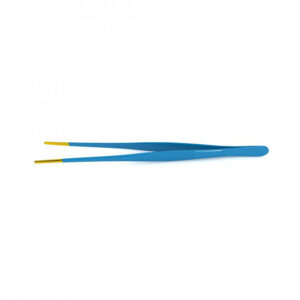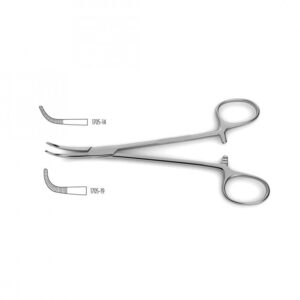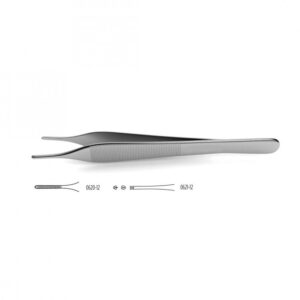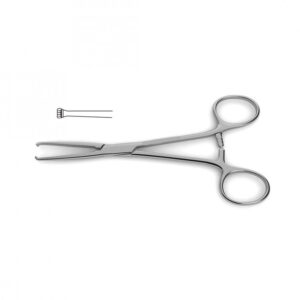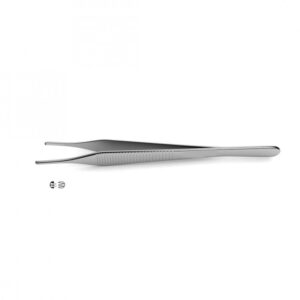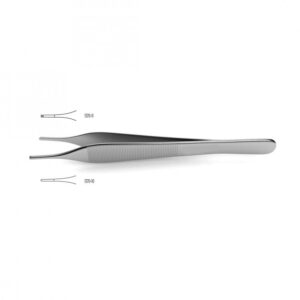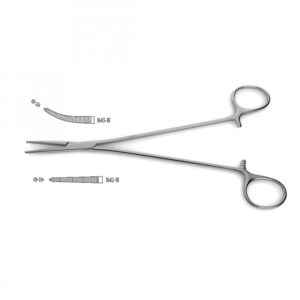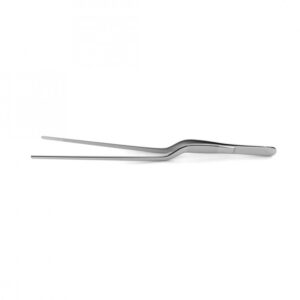| Name | Demartel-Wolfson Clamp |
| Lead Time | Lead time advised within 48 hours of order placement. |
| Specialty | General Instruments-Clamps – Intestinal |
| Material Finish | Stainless Steel |
| Grade | Premium Operating Room |
| Units of Measurement | Set |
| Manufacturer | seemab surgical |
| Sterility | Non-Sterile |
| Usage | Reusable |
Demartel-Wolfson Clamp
Demartel-Wolfson Clamp
set of 3
Demartel-Wolfson Clamp can be used in operations such as a colostomy in order to help clamp the colon. This intestinal clamp is offered in different sizes and comes in a set of 3. In this way, different sections of the colon can be held in place and a knife can be used to divide the colon that rests between the clamps.
SKU:
VI-01-199
Category: Forceps & Clamps
Description
Shipping & Delivery
Related products
Adson-Baby Forceps
Adson-Baby Forceps
narrow, curved, very delicate
Adson-Baby Forceps are typically used to grasp delicate tissue due to during general surgeries, especially in plastic surgery procedures. The very delicate pattern of the forceps includes partially serrated jaws that are narrow and curved. These jaws are also offered in two different lengths and are intended for tissue to be handled carefully.
Adson Thumb Forceps
Adson Thumb Forceps
standard pattern.
Adson Thumb Forceps are handcrafted from surgical grade German stainless steel. Available in a variety of forms: for dressings with a serrated platform or for tissue with a serrated platform and 1x2 teeth. These forceps are also known as pickups, and are by far the most common style of thumb forceps. Each style is also available several different lengths for a comfortable grip
Allis Tissue Forcep
Allis Tissue Forceps
standard pattern
standard pattern of the Allis Tissue Forceps are intended for the use of firmly grabbing or holding body tissue during surgery. This pattern includes a ratchet ring-handle with a selection of different sizes and types of teeth to accommodate various medical procedures. These teeth curve to the inside and may cause less harm to the tissue because of decreased general pressure applied to the area.
Adair-Allis Tissue Forceps
9x10 teeth, 6" (15.0 cm)
Adair-Allis Tissue Forceps are 6" long and are primarily used in general procedures in instances such as when diseased tissue needs to be held. The 9x10 teeth on the tips of the jaws provide a sure grasp of the tissue being held, and can also be used to approximate the edges of the membrane that creates the abdominal cavity lining.
Adson Tissue Forceps
2x3 teeth, 4-3/4" (12.1 cm)
Adson Tissue Forceps are handcrafted from surgical grade German stainless steel. The standard pattern is available with 2x3 teeth and is ideal for handling the various thicknesses of tissues. The serrated handle offers a comfortable and secure grip for the surgeon. They are comprised of premium, German stainless steel and come with a dull, satin finish to reduce glare. This instrument is protected by the seemab surgical manufacturer warranty on defects in materials and workmanship.
Adson-Micro Suture Forceps
w/ tying platform, 1.0 mm tips, 4-3/4" (12.1 cm), smooth platform
Adson-Micro Suture Forceps are handcrafted from surgical grade German stainless steel. These forceps are designed with 1.0 mm tips and a tying platform. Available with a smooth platform to securely hold a suture or with 1x2 teeth and a smooth platform for extra grip. This instrument is protected by seemab surgical manufacturer warranty on defects in materials and workmanship.
Adson Artery Forceps – Delicate
Delicate pattern, 1x2 teeth, 7-1/8" (18.0 cm)
Adson Artery Forceps are 7 1/8" and are developed with 1x2 teeth in a delicate pattern with either curved or straight jaws to suit different needs. Primarily applied during operations in which arteries need to be grasped or compressed, the teeth on the tips of the jaws interlock to confirm that a tight grip is held.
Adson Bayonet Dressing Forceps
7-1/2" (19.0 cm)
Adson Bayonet Dressing Forceps are handcrafted from surgical grade German stainless steel. Designed with its bayonet handle angled and 90 degrees from the grasping direction, these dressing forceps offer a leverage not seen with standard models. The serrated handle assures a firm grip on this instrument.

